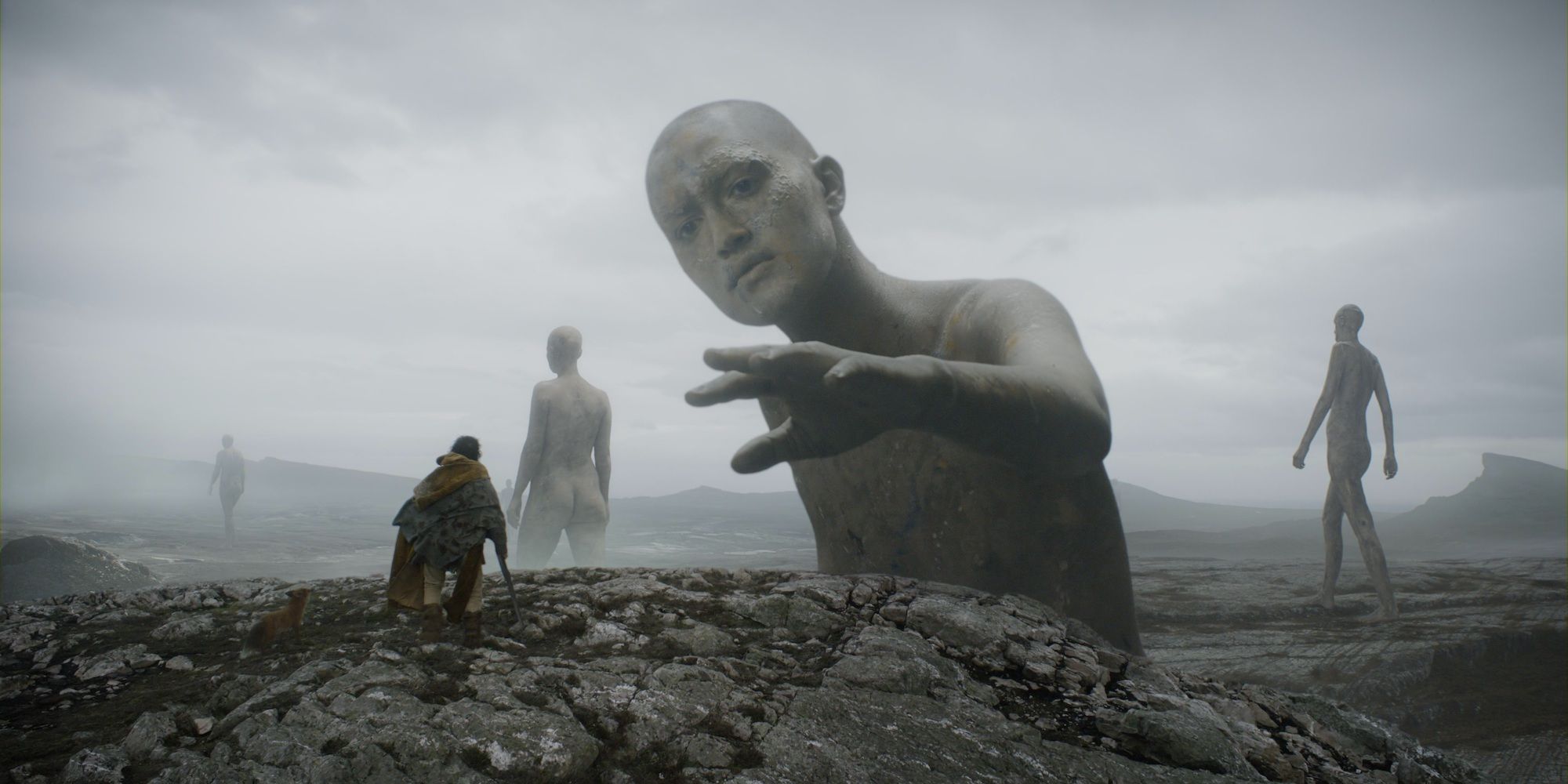Products You May Like
The 2021 movie The Green Knight is based on the 14th-century Arthurian poem Sir Gawain and the Green Knight, and includes elements from the original story, such as the giants depicted in the legend. Inspired by films like Willow and Excalibur, writer/director David Lowery (Pete’s Dragon, A Ghost Story) adapted the mythical tale for the screen. Distributed via A24, the film made its theatrical release in July 2021 before becoming available via streaming platforms including Amazon Prime Video.
The Green Knight stars Dev Patel as Sir Gawain. Lowery’s medieval fantasy follows the knight’s experience with the mythical Green Knight: the latter tricks the former into a game, and a hero’s journey ensues as Gawain embarks on his own adventure. Like the myth, the movie draws inspiration from chivalric tradition. The Green Knight also explores different folk motifs and features various otherworldly beings — such as the giants.
Lowery’s The Green Knight is not a typical fantasy film, but it does closely follow the Arthurian poem in many ways. As in the original poem, along the way to meet his fate at the Green Chapel, Gawain experiences several strange encounters, including meeting a group of wandering giants. Gawain’s interaction with the giants is one of many surreal events throughout the movie, and viewers may be left wondering whether or not these giants are real and the purpose they serve in the story. They might seem random at first, but their appearance in The Green Knight is a throwback to the medieval legends that inspired it.
In The Green Knight, it’s clear that these enormous roaming creatures appear soon after Gawain has eaten some wild mushrooms. Thus, one theory is that many of the things the young Gawain experiences, including his interaction with these giants, might be hallucinations. But there’s more to them than that. In an interview with Vanity Fair, Lowery explained how the decision to include the giants more predominately in the film — along with the other supernatural occurrences that set the film apart from the original story — was heavily influenced by Welsh history and folklore. The “cewri,” or giant, is a prominent figure in Welsh mythology from the Arthurian era, which includes legends of giants alongside those of witches, dragons, and monsters. Among the most notable are the tales of the mythological king and giant known as Brân the Blessed, who makes an appearance in several Welsh Triads. Thus, the giants in Lowery’s film are a throwback to both the poem and other stories of Welsh tradition.
In the Arthurian poem, the giants are merely mentioned in passing along with other references to the battles and dangers encountered by Gawain during his quest. But in The Green Knight, Lowery has fleshed out these mystical elements to create a movie that is both steeped in over 700 years of history and storytelling, and one that is uniquely modern, and all his own.
About The Author
